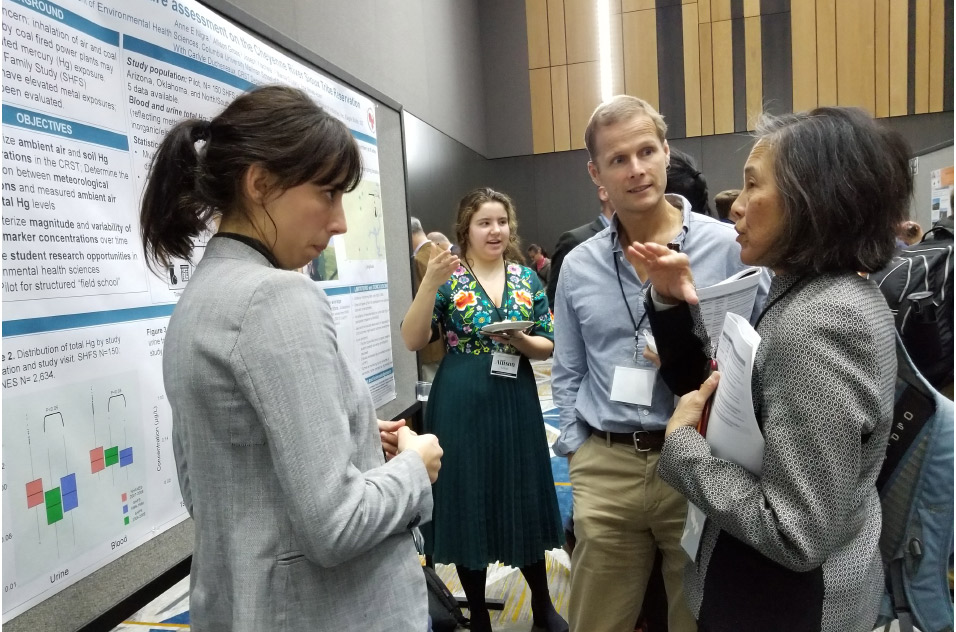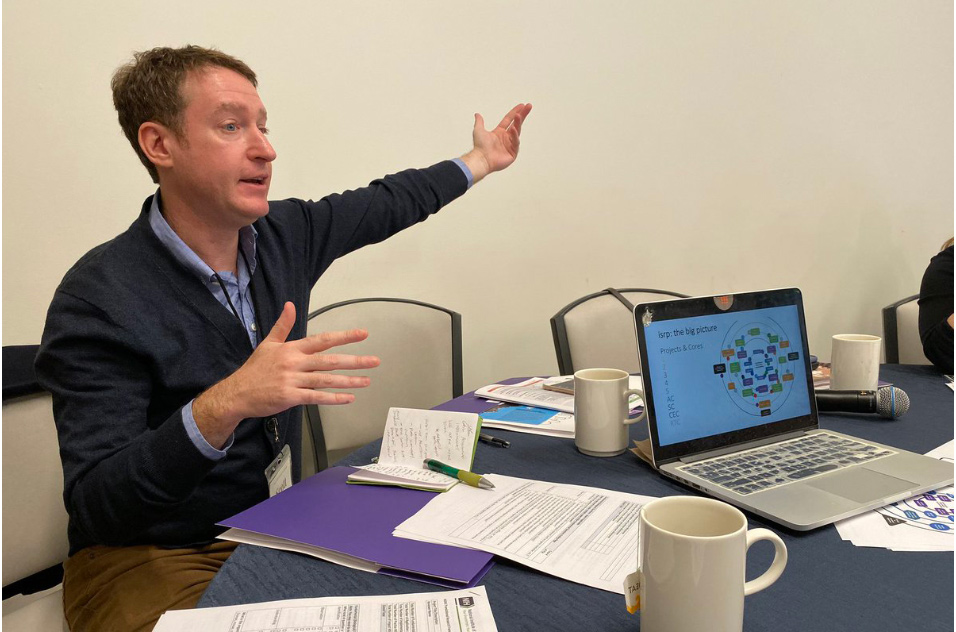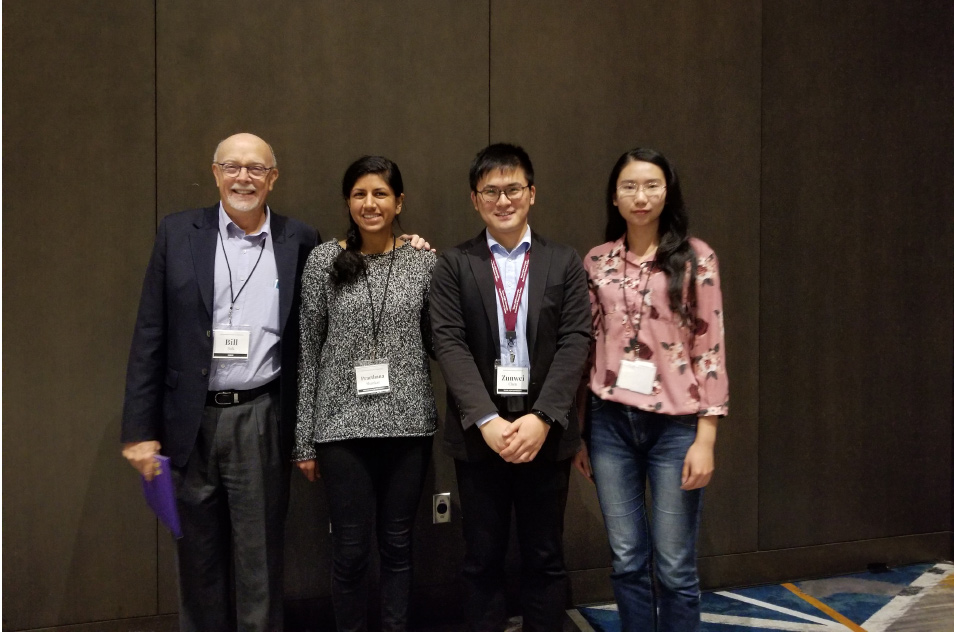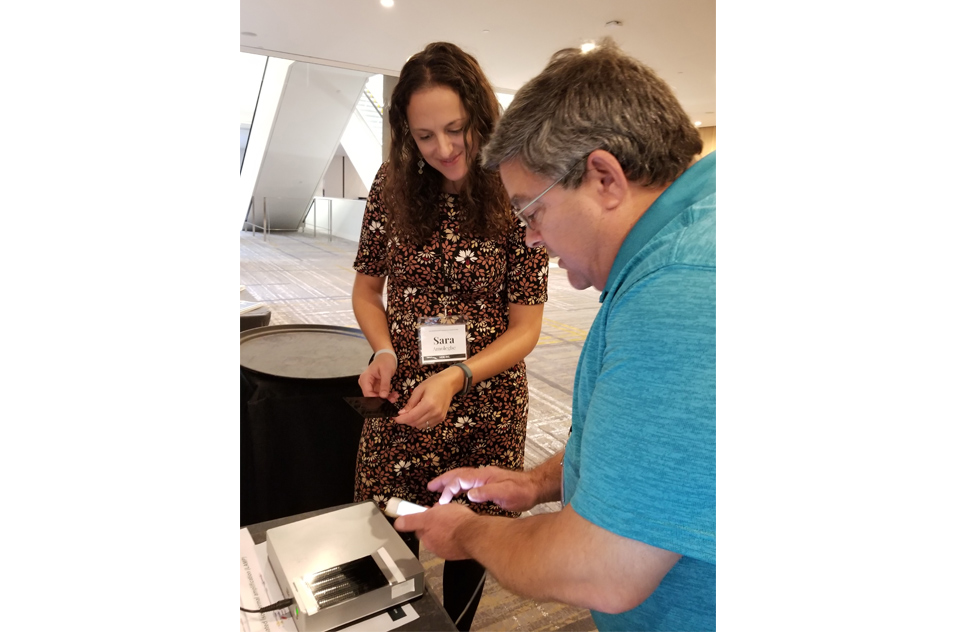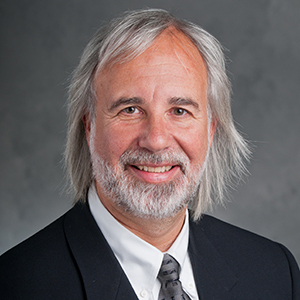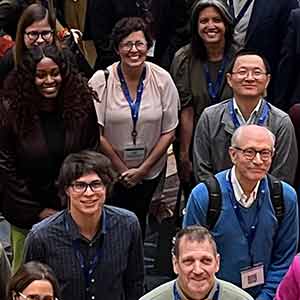On the last day of the 2019 NIEHS Superfund Research Program (SRP) Annual Meeting, held Nov. 18-20 in Seattle, participants were offered a boat tour of the Duwamish River. Organized by meeting hosts from the University of Washington (UW) SRP Center, the tour spotlighted the history of the Lower Duwamish Waterway Superfund Site and the community groups that have worked to protect the river as a cultural resource.
The tour was hosted by James Rasmussen, a member of the Duwamish Tribe and Superfund manager of the Duwamish River Cleanup Coalition (DRCC), along with Shawn Blocker of the U.S. Environmental Protection Agency (EPA) Region 10.
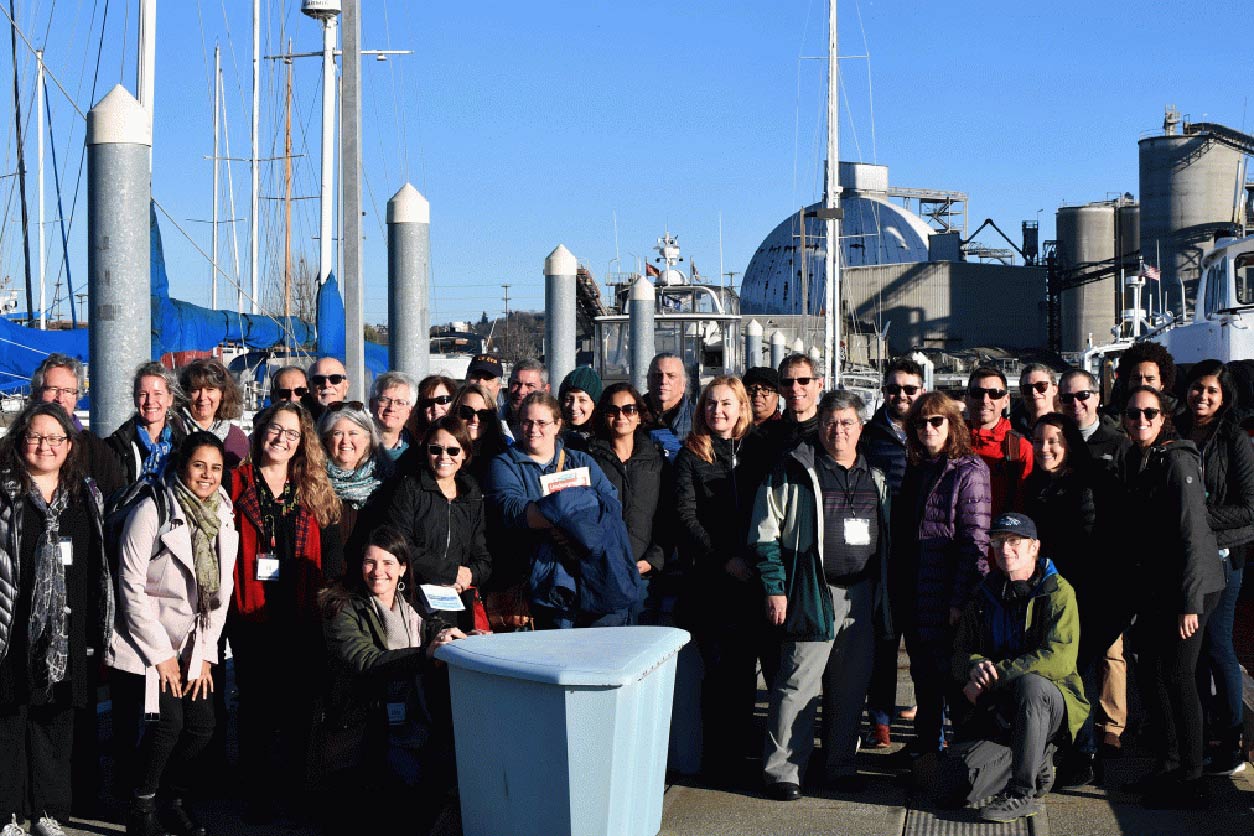 The Duwamish River tour offered an important local perspective on challenges surrounding active Superfund sites and the importance of community involvement. (Photo courtesy of UW SRP Center)
The Duwamish River tour offered an important local perspective on challenges surrounding active Superfund sites and the importance of community involvement. (Photo courtesy of UW SRP Center)Nearly two decades of cleanup
Blocker described the vast cleanup efforts carried out since 2001, when the area was designated a Superfund site. Clean up continues, with the help of community groups like the DRCC.
Dredging and capping are two of the approaches that parties responsible for the contamination use to reduce human exposure to polychlorinated biphenyls (PCBs) and other harmful chemicals in the sediment. PCBs are classified as human carcinogens and have been banned from the United States since 1979. However, like other persistent chemicals, they remain in water, soil, sediment, and in animals and plants.
Rasmussen discussed how the river’s history of contamination affects Native Americans and other residents who rely on it. People living near the river use it for fishing and recreation, giving rise to concerns about chemical exposures.
 Blocker, left, and Rasmussen, right, described the complicated process by which cleanup standards are set and the importance of building trust with and involving stakeholders. (Photo courtesy of UW SRP Center)
Blocker, left, and Rasmussen, right, described the complicated process by which cleanup standards are set and the importance of building trust with and involving stakeholders. (Photo courtesy of UW SRP Center)Restoring an important resource
Boat tour participants also saw ecological restoration along areas of the riverbank and learned about the river’s future.
“This river is an important resource,” said Rasmussen. “We have to keep taking care of it and engaging in activities that benefit the community and encourage environmental health and resilience.”
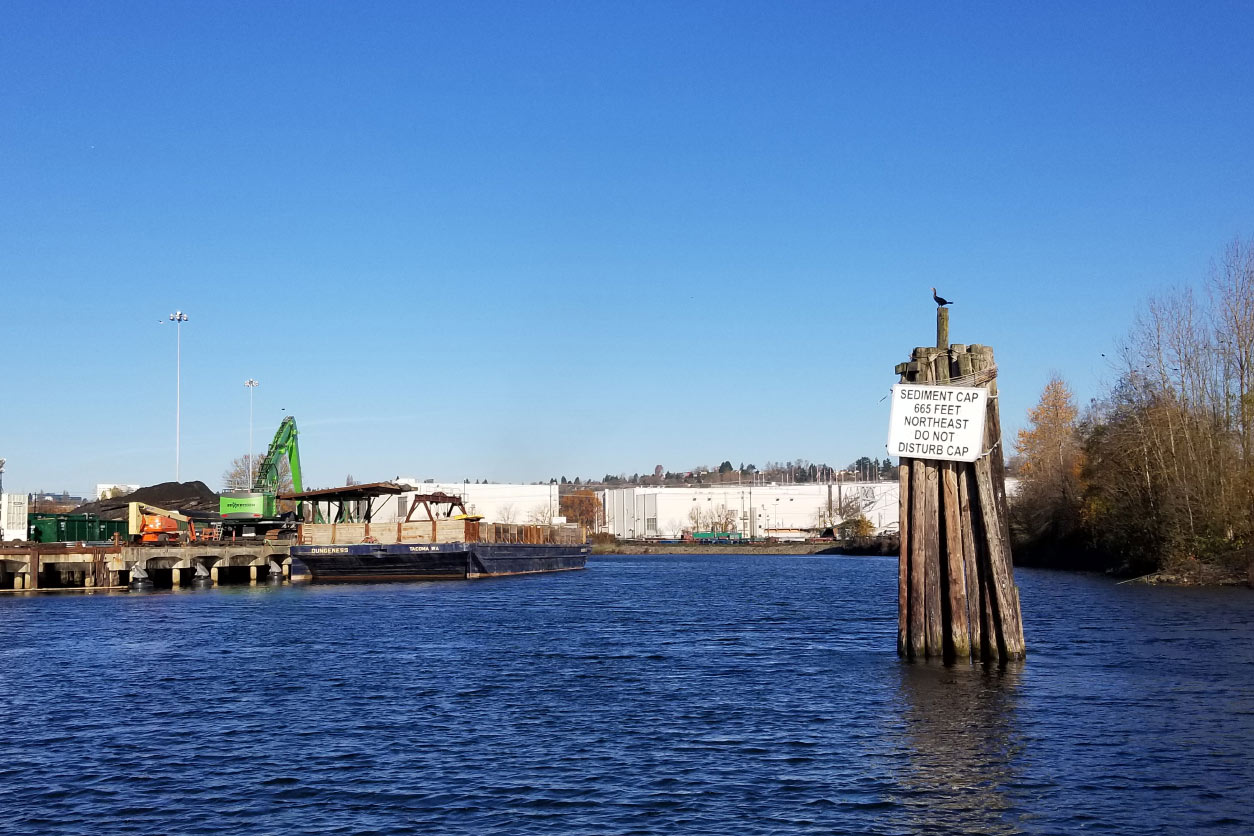 On one segment of the Duwamish River, contaminants were capped rather than removed by dredging. Caps are engineered layers of sand designed to trap toxic sediment underneath. (Photo courtesy of Adeline Lopez)
On one segment of the Duwamish River, contaminants were capped rather than removed by dredging. Caps are engineered layers of sand designed to trap toxic sediment underneath. (Photo courtesy of Adeline Lopez)Community involvement is key
Paulina Lopez, executive director of the DRCC, stressed that community empowerment should always be a focus and an end goal. “Building trust is key,” Lopez said. “You have to work hand in hand with the community partners and ensure balance of power.”
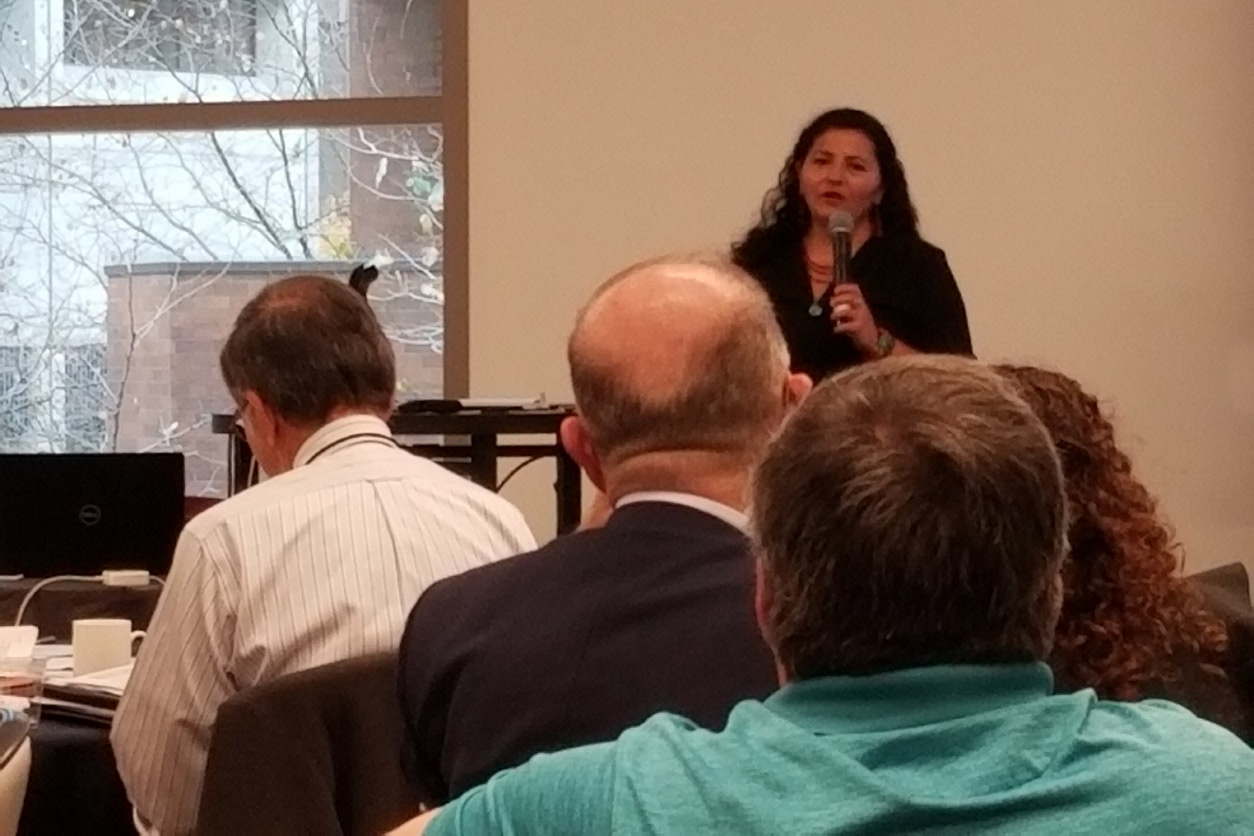 Paulina Lopez explained the importance of understanding the community’s perspective and how problems such as racism or classism can continue if the community is not empowered. (Photo courtesy of Adeline Lopez)
Paulina Lopez explained the importance of understanding the community’s perspective and how problems such as racism or classism can continue if the community is not empowered. (Photo courtesy of Adeline Lopez)According to Julie Congdon, from EPA, the agency uses a unique roundtable approach in their community involvement plan during all stages of the Superfund removal and cleanup process. Congdon is the agency’s community involvement manager for the site. She described EPA’s efforts to involve nearby communities during the meeting’s Research Translation Core and Community Engagement Core (RTC/CEC) program.
Thomas Burbacher, Ph.D., and B.J. Cummings, from the UW RTC/CEC, underscored the importance of a community-led vision and allowing the community to tell their own stories. They shared insights from an Asian Pacific Islander seafood consumption study in Washington state.
(Adeline Lopez is a research and communication specialist for MDB Inc., a contractor for the NIEHS Superfund Research Program)






